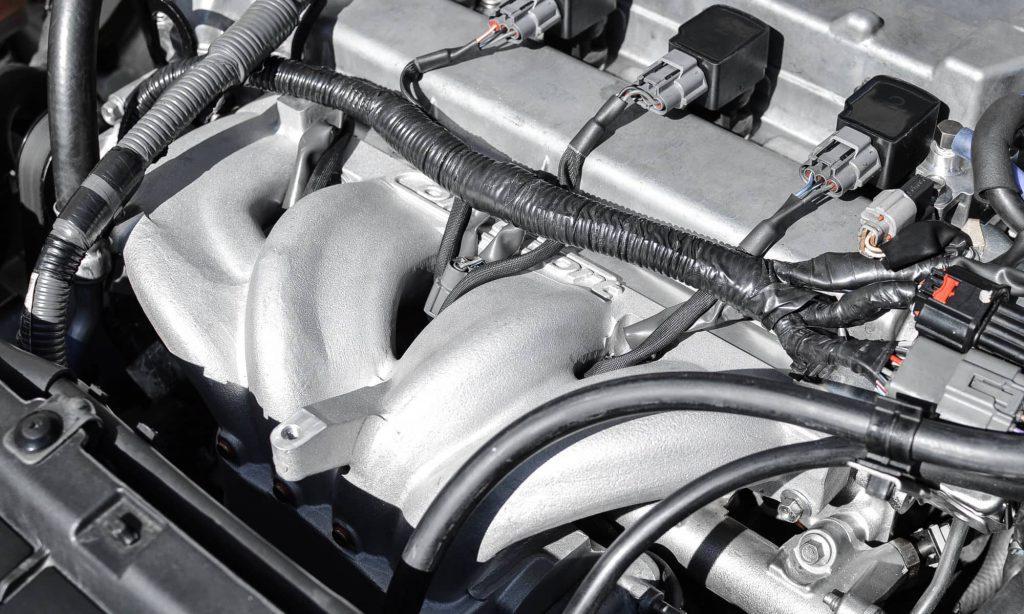The Ford modular 4.6 V8 engine, which the company got out in the market in 1991, became a massive success with millions of automobile owners. The engine might be no powerhouse, however, it offers better fuel economy and runs 200,000 miles.
The state police utilize the Crown Victorias fit with 4.6 engines to 130,000, not to forget the taxi services run these from 300,000 to 400,000. One can find this engine in Grand Marquises, F-series pickup trucks, E-series vans, Explorers and Vics.
However, there seems to be one serious 4.6 Ford engine problems, which challenges its popularity among car lovers.
Contents
The 4.6 Ford Engine Problems
The ford 4.6 l v8 came with a plastic intake manifold from 1996 to 2001. However, it had one major flaw due to which it was more prone to failure.
The plastic subject to varying heat and cooling cycles lead to its constant expansion and contraction.
Ford had the alternator bracket mount right into the plastic, which put additional pressure on the material. You can browse online to get the best maintenance tips for taking care of your car’s engine.
The stress often leads to a crack or split in the material without any prior signs. In short, the Ford 4.6 intake manifold gasket leak is a design flaw of the Ford model that led to its losing popularity among the masses.
We will now help you understand one of the significant issues in the ford 4.6 engine.
1. The Coolant Issue
Besides, the fitting for the heater hose at the back and coolant temperature sensor at the front would loosen and eventually fail.
In both cases, the pressurized coolant would leak from the point of failure and cause your vehicle to overheat.
The coolant might also weep and puddle for a longer time around the fitting, and in the fuel injector before finally failing. It is one of the prominent 4.6 Ford Engine Problems you might face.

SEE MORE:
- What Happens When Your Car’s Coolant Is Completely Drained
- Five Warning Signs of Low Coolant Level in the Car
2. Ford’s Solution To The Issue
In the year 2001, Ford addressed the issue of the plastic manifold with a new manifold utilizing cast aluminum at the failure points and redesigned thermostat mount.
However, if the manifold fails and the car owner ends up stranded on the side of the road, the aluminum one would also not do much good. We recommend you consult a car expert to try getting to the root of the issue.
3. Replacing The Intake Manifold
You must understand that replacing the 4.6 ford engine intake manifold is a complex, expensive, and time-consuming job. The manifold is under several layers of vacuum lines, wiring, linkages, and other vital parts of your car. A single mistake could lead to more issues with the vehicle.

FAQs
-
Can the 4.6 Ford engine’s plastic intake manifold cause long-term issues?
Yes, the 4.6 Ford engine, particularly in models from the late 1990s and early 2000s, utilized a plastic intake manifold that could crack over time due to heat stress and material fatigue.
This problem could lead to coolant leaks, overheating, and in some cases, engine failure if not addressed promptly.
Ford eventually offered a reinforced manifold for replacement, but it remains an area of concern for owners of affected models.
-
Is there a common issue with the timing chain tensioners on the 4.6 Ford engine?
Timing chain tensioners in the 4.6 Ford engine have been known to fail, especially in high-mileage vehicles.
This failure can lead to timing chain slack, resulting in improper engine timing, decreased performance, and even the risk of severe engine damage if the chain slips or breaks.
-
How does the 4.6 Ford engine handle spark plug maintenance, and are there any specific concerns?
The 4.6 Ford engine, particularly the 2-valve version, has a unique issue where spark plugs can become seized or break off in the cylinder head during removal.
This is due to the aluminum cylinder heads and long-term carbon buildup around the spark plugs.
Special tools and procedures have been developed to address this issue, but it requires careful handling to avoid costly repairs.
-
Are there any known problems with the 4.6 Ford engine’s exhaust manifold?
The exhaust manifolds on the 4.6 Ford engine, especially in trucks and SUVs, are prone to cracking and leaking.
This is often attributed to the thermal expansion and contraction that exhaust manifolds undergo, which can be exacerbated by the stress of off-road driving or heavy towing.
Leaking exhaust manifolds can lead to decreased engine efficiency, increased emissions, and a noticeable ticking noise from the engine bay.
-
Does the 4.6 Ford engine have issues with oil consumption?
While not as common, some 4.6 Ford engines, particularly those with higher mileage, may experience increased oil consumption. This can be due to worn valve seals, piston rings, or cylinder wall wear.
-
Can after market modifications exacerbate problems in the 4.6 Ford engine?
Aftermarket modifications, while popular among enthusiasts for boosting performance, can sometimes exacerbate existing issues or introduce new problems in the 4.6 Ford engine.
For instance, adding a supercharger without upgrading the cooling system or reinforcing the intake manifold can lead to overheating or manifold failure.
-
How does the EGR system affect the 4.6 Ford engine’s performance?
The Exhaust Gas Recirculation (EGR) system in the 4.6 Ford engine can contribute to performance issues if it becomes clogged or malfunctions.
A faulty EGR valve can cause rough idling, decreased fuel efficiency, and increased emissions.
Check out this video from FordTechMakuloco to learn more about the common failure points on the Ford engine!
Summary
Thus, we hope that this blog helps you understand the primary 4.6 ford engine problems, which are responsible for its loss of popularity. Besides, taking the car to an expert would help get the issue resolved.



